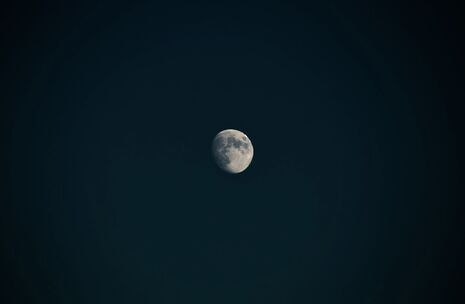Varsity Explains: How often is once in a blue moon?
The commonly used idiom “once in a blue moon” means “very rarely, an infrequent event”. But just how rare is a blue moon?

"Blue moon” can actually have several very different definitions. Confusingly none of these have anything to do with the colour of the moon, but rather are names given to specific full moons.
We always see the same side of the moon because it rotates on its axis whilst orbiting the earth. Sometimes part of the moon is obscured by shadow. This is because, although sunlight illuminates half of the moon at all times, at some points in its orbit only part of the sunlit side can be seen from earth. The time taken for shadow to completely cover the moon (new moon), to the moon becoming full, to shadow completely covering the moon again is called a lunar month, and lasts approximately 29.5 days. This means that in a year there are twelve complete lunar months and, most years, twelve full moons. However as twelve full cycles of the moon only take 354 days, some years there is a thirteenth full moon: a blue moon.
For several months, “once in a blue moon” was every night.
But which of the thirteen full moons is the blue moon? Another definition states that a blue moon is the third moon in an astronomical season (three calendar months) that contains four full moons. In a similar vein, the third, most popular interpretation is that a blue moon is the second full moon in a calendar month. By this rationale, there were two blue moons in 2018, one in January and one in March.
So just how long will you have to stick around for the next blue moon? Depending on which definition you take, you will usually be waiting two to three years. However, if this is sounds too long, you could always move to a volcanic region. In 1883, the eruption of Krakatoa filled the air with dust particles around one micron in size, scattering red light and causing the moon to appear literally blue. For several months, “once in a blue moon” was every night.
 News / CUP announces funding scheme for under-represented academics19 December 2025
News / CUP announces funding scheme for under-represented academics19 December 2025 News / Cambridge welcomes UK rejoining the Erasmus scheme20 December 2025
News / Cambridge welcomes UK rejoining the Erasmus scheme20 December 2025 News / SU reluctantly registers controversial women’s soc18 December 2025
News / SU reluctantly registers controversial women’s soc18 December 2025 Film & TV / Timothée Chalamet and the era-fication of film marketing21 December 2025
Film & TV / Timothée Chalamet and the era-fication of film marketing21 December 2025 News / News in Brief: humanoid chatbots, holiday specials, and harmonious scholarships21 December 2025
News / News in Brief: humanoid chatbots, holiday specials, and harmonious scholarships21 December 2025








